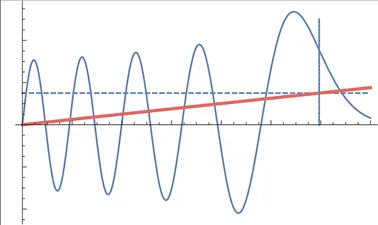
Computational Methods for Data Analysis 
This course provides an introduction to computational methods for data analysis. Students will learn exploratory and objective data analysis techniques, and gain a brief review of statistical methods and their computational implementation. Topics covered include time series analysis, spectral analysis, filtering methods, principal component analysis, orthogonal mode decomposition, and image processing and compression. With this course, students will gain the skills to effectively analyze data and make informed decisions. ▼
ADVERTISEMENT
Course Feature
![]() Cost:
Cost:
Free
![]() Provider:
Provider:
Coursera
![]() Certificate:
Certificate:
No Information
![]() Language:
Language:
English
![]() Start Date:
Start Date:
5th Jan, 2015
Course Overview
❗The content presented here is sourced directly from Coursera platform. For comprehensive course details, including enrollment information, simply click on the 'Go to class' link on our website.
Updated in [June 30th, 2023]
This course provides an overview of computational methods for data analysis in the physical, engineering, and biological sciences. It begins with a brief review of statistical methods and their computational implementation. Topics covered include time series analysis, spectral analysis, filtering methods, principal component analysis, orthogonal mode decomposition, and image processing and compression. Students will gain an understanding of the exploratory and objective data analysis methods used in these fields.
[Applications]
The application of the course, Computational Methods for Data Analysis, can be seen in various fields. It can be used to analyze physical, engineering, and biological data. It can also be used to study time series analysis, spectral analysis, filtering methods, principal component analysis, orthogonal mode decomposition, and image processing and compression. Additionally, the course can be used to develop and implement statistical methods for data analysis. Furthermore, the course can be used to develop and implement algorithms for data analysis. Finally, the course can be used to develop and implement software for data analysis.
[Career Path]
The recommended career path for learners of this course is Data Scientist. Data Scientists are responsible for analyzing large amounts of data to identify patterns and trends, and then using this information to develop strategies and solutions to business problems. They use a variety of methods, such as machine learning, statistical analysis, and predictive modeling, to extract insights from data. Data Scientists must be able to communicate their findings to stakeholders in a clear and concise manner.
The demand for Data Scientists is growing rapidly, as businesses increasingly rely on data-driven decision making. Companies are looking for Data Scientists with strong technical skills, such as programming, data analysis, and machine learning, as well as the ability to communicate complex concepts to non-technical stakeholders. As the field of data science continues to evolve, Data Scientists will need to stay up to date on the latest technologies and trends in order to remain competitive.
[Education Path]
The recommended educational path for learners interested in Computational Methods for Data Analysis is a Bachelor's degree in Computer Science or a related field. This degree will provide students with a strong foundation in the fundamentals of computer science, including programming, algorithms, data structures, and software engineering. Additionally, students will gain an understanding of the principles of data analysis, including data mining, machine learning, and artificial intelligence.
The development trend for this degree is to focus on the application of computational methods to data analysis. This includes the use of advanced algorithms and techniques to extract meaningful insights from large datasets. Additionally, students will learn to develop and implement data-driven solutions to real-world problems. As the field of data science continues to grow, the demand for professionals with expertise in this area is expected to increase.
Course Provider

Provider Coursera's Stats at AZClass
Discussion and Reviews
0.0 (Based on 0 reviews)
Explore Similar Online Courses

Childcare Course for Vulnerable Children : FutureLearn

Quantum Mechanics: A First Course

Python for Informatics: Exploring Information

Social Network Analysis

Introduction to Systematic Review and Meta-Analysis

The Analytics Edge

DCO042 - Python For Informatics

Causal Diagrams: Draw Your Assumptions Before Your Conclusions

Whole genome sequencing of bacterial genomes - tools and applications

The Data Analyst Course: Complete Data Analyst Bootcamp

Data Analysis in Excel


Start your review of Computational Methods for Data Analysis